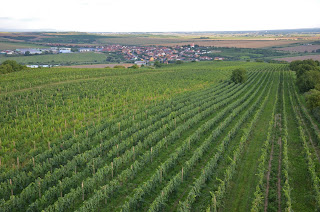If something is really popular in South Moravia, it is a visit to the wine cellar where you can enjoy the local wines. You can distinguish between two types of wine cellars in the Czech Republic - the small houses located in the picturesque wine villages or very large historical cellars and corridors in several towns. In both of them you can enjoy wine tastings right from the source or folklore night with live cimbalom band!
There are several wine villages where you can admire different types of these little cellars. They look like small houses and belong to individual families. Most of them are not open for public or they are accessible only in some periods of the year for special events called "opened cellars" or during the main summer season. These cellars have mostly two rooms in two floors - a pressing room is located few steps under the ground, further ahead there are deeply embedded cellars for wine storage - in barrels or bottles. Mostly the cellars are located in streets at the end of the village on the way to the vineyards and they were built during 18th or 19th century.
In every village you can admire different style of these little houses - some of them are decorated with beautiful traditional ornaments.
The second type of wine cellars is mostly located in bigger towns (e.g. Valtice, Znojmo) and their history is dated back to 13th or 14th century when the boom of Czech viticulture started under the rule of Charles IV – the King of Bohemia, Holy Roman Emperor. The cellars have several floors and few kilometres of corridors which were used not only for wine storage but also for defence or as secret escapes underneath the city. They belong to castles, chateaus or monasteries and some of the passages are still waiting for their discovery. Nowadays most of them are used by big commercial companies for wine tours and wine storage.
They are also used for cultural events and you can usually visit them all year long.
The proverb says that if you put coin on the wall of the wine cellar, you will return there again in future - so if you have the chance, don't forget to do it!
Follow Check Czech Wine to explore more details about Czech wine!
Follow our Facebook: https://www.facebook.com/checkczechwine
View more photos on our Instagram: https://www.instagram.com/checkczechwine
Visit our website to see wines we offer: http://www.winehills.eu
Visit our website to see wines we offer: http://www.winehills.eu





















